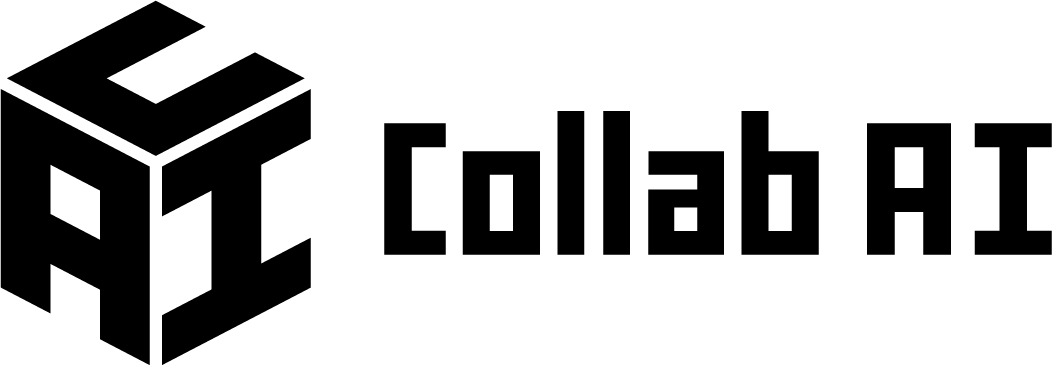Have you ever struggled for days to integrate a complex AI model only to have your deadline pass you by? You’re not by yourself. Due to technical debt and complicated APIs, 85% of ML projects never reach production. This challenging reality is gradually being transformed by open-source AI wrappers. They serve as a bridge between practical applications and complex AI models. Thanks to these powerful interfaces, integrating advanced machine-learning features into everyday software development has become much easier.
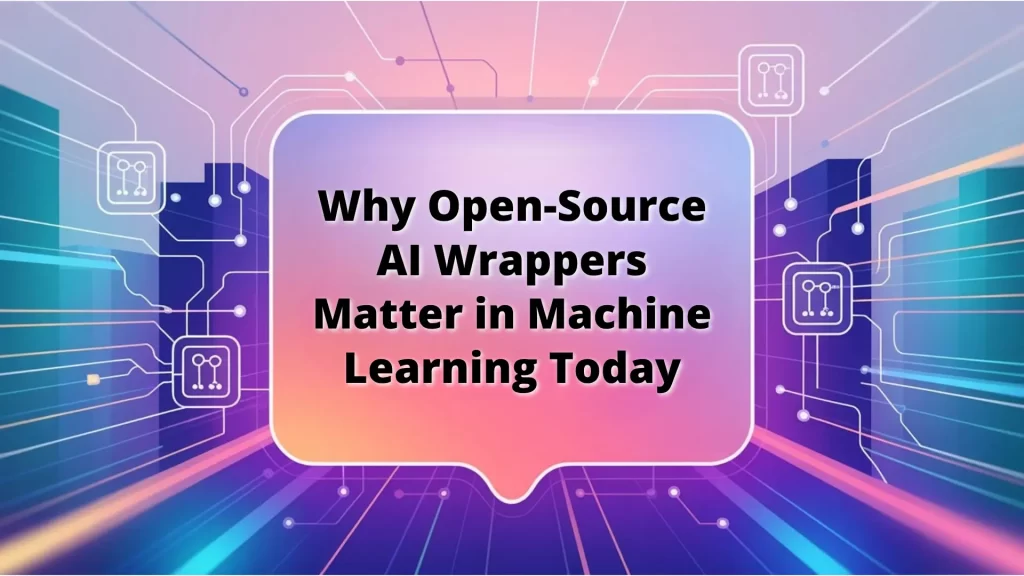
Key Impact Areas:
- Rapid development and deployment of machine learning solutions
- Reduced barriers for AI development
- Streamlined integration with existing systems
- Enhanced collaboration opportunities
Now, more people can dive into advanced machine learning tools by moving away from those pricey proprietary systems to open-source AI platforms. Businesses that were once tied down by expensive solutions can now explore community-driven alternatives that often perform just as well, if not better. This shift has accelerated the development of machine learning applications, creating a vibrant environment where developers exchange ideas, make improvements, and build on each other’s successes.
When you check out this guide, you’ll find out how these open-source AI tools can slash your implementation time by a whopping 60%. So you can really zone in on tackling real-world problems without getting stuck in all the nitty-gritty technical stuff.
What Are Open Source AI Wrappers and Why Use Them?
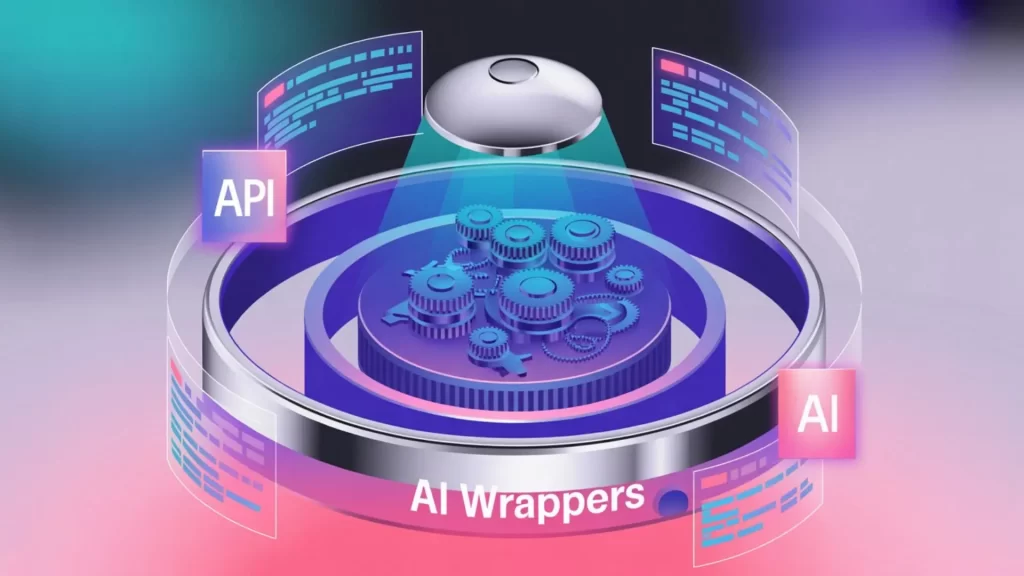
Why is tech suddenly waking up to open-source AI wrappers, and why should you care? Well, if you’ve ever tried tackling one of those complicated machine learning libraries, only to find yourself completely lost in the endless documentation, you will know that AI wrappers come to the rescue and how.
With open-source AI wrappers, working with complex AI models, algorithms, and APIs becomes a breeze. Think of them as a friendly bridge linking those intricate machine learning systems to your application code. This way, you can concentrate on leveraging those AI solutions without getting bogged down by the tricky implementation details.
Custom AI Wrappers for Industry-Specific Needs
AI wrappers can be tailored to meet the specific requirements of different industries:
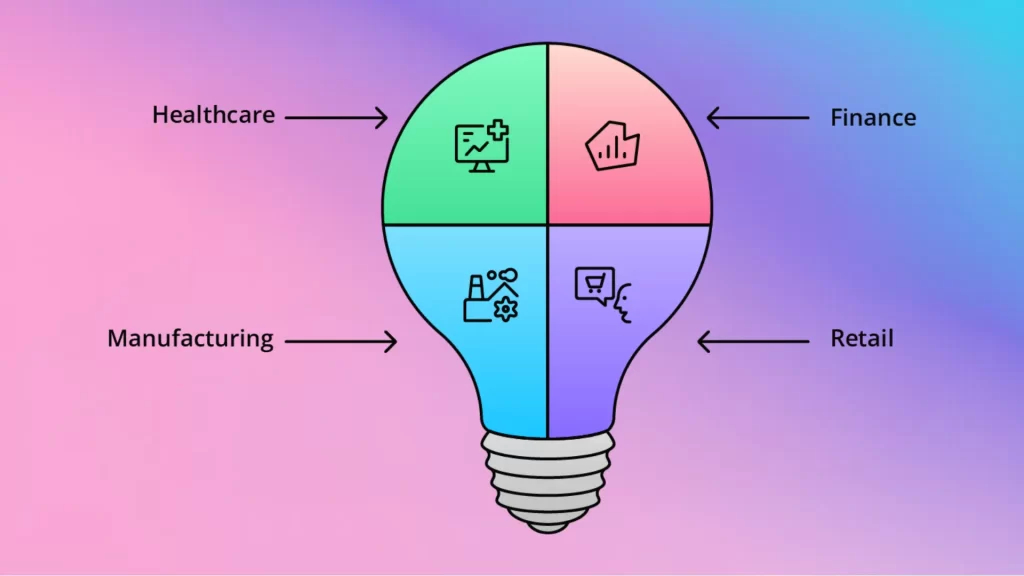
- Healthcare wrappers that assist in patient data analysis and integrate easily with medical imaging systems.
- Financial sector wrappers that incorporate fraud detection and risk assessment models.
- Manufacturing wrappers that monitor quality control and optimize production processes.
- Retail wrappers that improve inventory management and provide insights into consumer behavior.
Breaking Down Technical Barriers
Custom AI wrappers make it possible for people without advanced degrees in data science to use machine learning. Here are some examples of who can benefit from these tools:
- Business analysts sifting through market data.
- Healthcare pros digging into patient outcomes.
- Financial advisors crafting risk models.
- Experts from all kinds of fields.
Open source AI wrappers make those complicated machine learning tasks easier. What used to take a great deal of coding and getting into the technicalities of ML can now be handled with just a few lines of code. This shift opens up some pretty exciting possibilities, like:
- Faster prototyping: You can quickly play with ideas and concepts without spending ages on the implementation part.
- Faster deployment: With everything simplified, discovering AI solutions is much quicker.
- Broader adoption: Industries that were hesitant to embrace AI due to technological hurdles can now easily incorporate these tools into their daily operations.
The Open Source Advantage: Collaborative Development for All
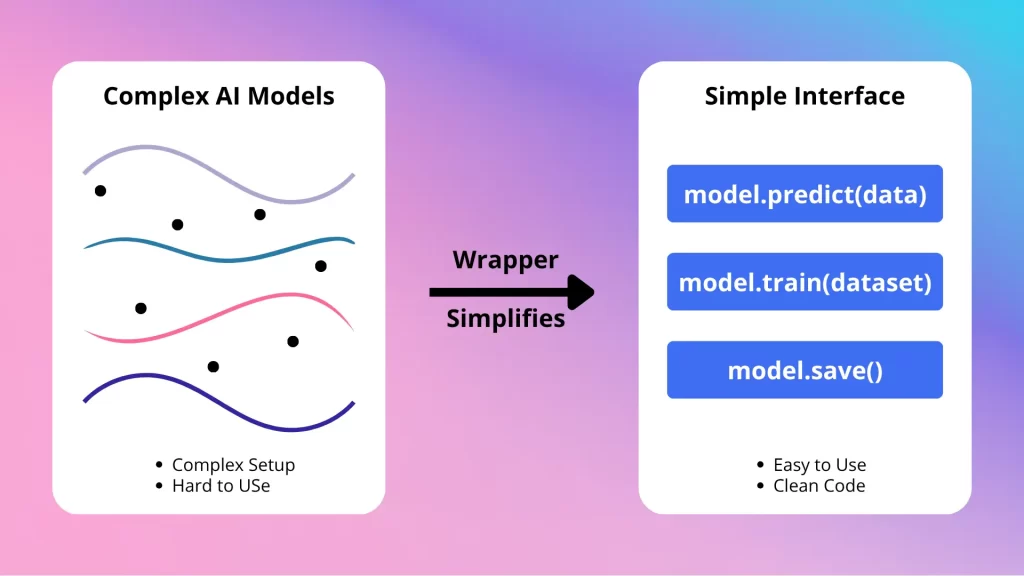
Open-source AI platforms have made the development of machine learning a vibrant, community-driven field. Because of this, developers around the world can collaborate on projects, share code, and build on each other’s ideas in real time.
Let’s talk about Hugging Face, for example. It really highlights how teamwork can enhance AI development, with thousands of developers coming together to contribute to this huge collection of pre-trained models and handy tools. Here’s what you can expect to find:
- Active code reviews and bug fixes from the community.
- Datasets shared by the community to effectively train models.
- Handy documentation updates that reflect real-world experiences.
- Regular tweaks and enhancements driven by user feedback.
Then there’s TensorFlow’s Keras API, a prime example of what open-source collaboration is truly capable of. This high-level neural network library began as a small independent project and grew into TensorFlow’s official API thanks to community contributions. Now, developers have the chance to:
- Access ready-made neural network layers.
- Build complex architectures without writing a ton of code.
- Share their own custom model implementations.
- Benefit from optimizations that have been peer-reviewed.
LangChain is making waves as the latest innovation in this open-source space, focusing on language model integration. The platform lets developers:
- Chain together different language models.
- Create tailored processing pipelines.
- Share tips on prompt engineering.
- Build on what’s already been done.
These collaborative platforms are a blessing. They cut down development time, enhance code quality, and boost AI innovation through shared knowledge and resources. The quick turnaround cycles and the diverse perspectives from the global developer community are pushing the limits of what we can do with AI technology.
Benefits of Open-Source AI Wrappers
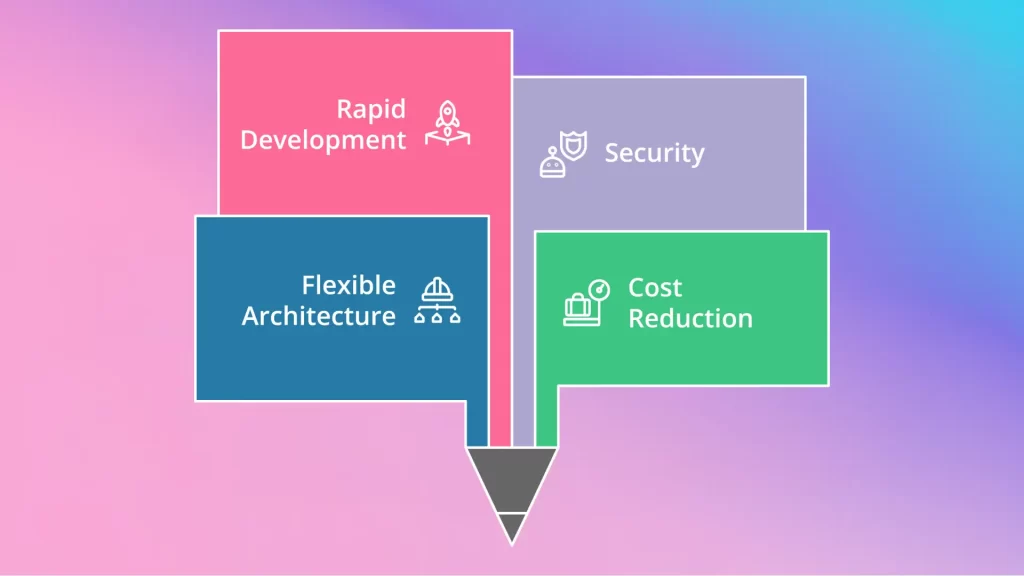
Open-source AI wrappers really shake things up for machine learning development, offering some amazing perks thanks to their flexibility and low-cost nature. These tools let you tweak and adapt AI solutions without needing to start from square one, which means you save a ton of precious time and resources in the development process.
Why Choose Open-Source Wrappers?
- Flexible Architecture: The architecture of an AI wrapper can integrate with multiple AI models, swap out parts, or add new features without messing up your existing setups.
- Cost Reduction: With open-source wrappers, you can use free, community-maintained resources to create AI solutions that are ready for production. It becomes easy to cut infrastructure expenses and do away with costly licensing fees.
- Rapid Development: Abstract complex AI operations into simple, reusable components. This abstraction accelerates development cycles by reducing boilerplate code and simplifying implementation.
- Security Through Transparency: Benefit from continuous community audits and peer reviews. With open-source code, developers can detect and fix vulnerabilities quickly, creating more secure AI applications.
The community-driven nature of open-source wrappers is truly impressive. Developers identify glitches, propose ideas, and even introduce exciting new features. It’s like a continuous dialogue where everyone contributes, making the custom AI wrappers run smoother and more reliably.
And the best part? This isn’t just ideal for solo coders. Entire companies get a lot out of it, too. They can build AI tools that fit like a glove for their needs, all while keeping a solid grip on their own data and how things get built. Plus, being able to peek under the hood and tweak the source code? That gives a level of openness and flexibility that’s pretty rare when you’re dealing with AI stuff.
Real-World Applications: Open-Source Wrappers in Action
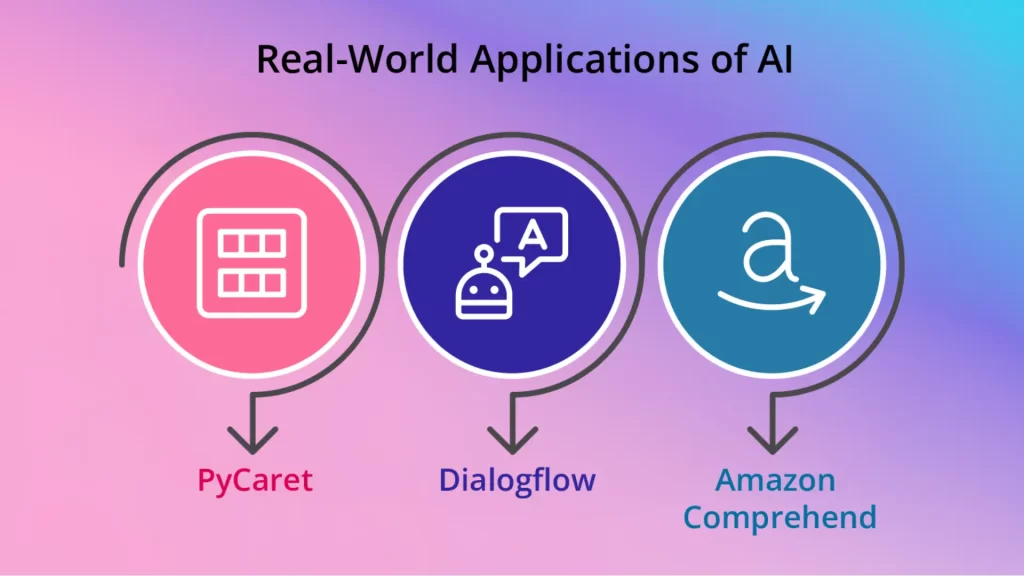
So, let’s check out three open-source AI wrappers that are actually shaking things up in real-world applications:
1. PyCaret: Automating ML Workflows
PyCaret is a unique low-code Python wrapper that streamlines ML processes and saves you tons of time. You can easily:
- Train and test different models with almost no fuss
- Tap into big-name libraries like scikit-learn and LightGBM
- Do everything from classification to clustering
- Roll out models fast with handy deployment tools
2. Dialogflow: Changing Chatbot Building
Google’s Dialogflow wrapper just makes creating conversational bots way simpler:
- Build natural language understanding (NLU) skills
- Launch on several platforms at once
- Hook up with existing apps via REST APIs
- Manage tricky chat flows without much coding at all
3. Amazon Comprehend: Text Analysis Made Easy
This NLP wrapper processes mountains of text without breaking a sweat:
- Pull out important phrases and details from documents
- Analyze sentiment in customer feedback
- Recognize languages on its own
- Handle millions of documents through batch operations
These tools really show how AI wrappers make a difference in real-world setups. PyCaret turns weeks of coding into just hours, Dialogflow handles customer chats like a pro, and Amazon Comprehend changes raw text into useful info. The best part? These wrappers let teams get AI done without needing to be machine learning professionals.
The Future of Open-Source AI Wrappers: Verticalization and Beyond
The growth of vertically specific AI solutions is a game changer in open-source wrapper development. In health care, finance, and manufacturing, we see now very specialized wrappers that also address each of these fields’ unique issues.
- Healthcare: Custom AI wrappers that include HIPAA compliance, medical imaging analysis, and patient data privacy.
- Finance: Specialized solutions for risk assessment, fraud detection, and regulatory reporting.
- Manufacturing: Industry-specific wrappers that optimize predictive maintenance and quality control.
Domain expertise is what is in short supply, which is why we see the development of these specialized tools. You will have pre-built components for specific industry workflows, which at the same time reduces the need for in-depth AI knowledge while at the same time upholds high performance standards.
AI’s democratization through verticalized solutions, which in turn affects all sectors:
- Faster deployment of AI solutions
- Reduced implementation costs
- Enhanced accuracy through industry-specific optimizations
- Improved interaction between technical teams and domain experts
These special wrappers introduce a world of opportunity for businesses. Small clinics can now implement advanced diagnostic tools. We even see regional banks use very sophisticated fraud detection systems, which were only used by large-scale institutions in the past.
Embracing the Revolution: How to Get Involved with Open-Source Wrappers Now!
You can make a difference in machine learning at this very moment with these actions:
1. Check Out Popular Models
- Test out Hugging Face Transformers for NLP tasks
- Build neural networks with TensorFlow Keras
- Try PyCaret for automated ML workflows
2. Participate in Active Groups
- Contribute to GitHub repositories
- Share your wrapper implementations
- Report bugs and suggest improvements
3. Design Your Solutions
- Build custom wrappers for your industry
- Adapt existing tools to fit specific use cases
- Share your innovations with the community
The open source AI community is looking for your input and expertise. What you bring to the table and what you do will help shape the future of intelligent applications and make AI accessible to many industries. Whether you are an experienced developer or a newbie, the power of these tools can turn your visions into reality.
Ready to leave your mark? Choose a framework, join a community, get in touch with us at CollabAI, and start building. You could be the one to break through in machine learning with your next project.
